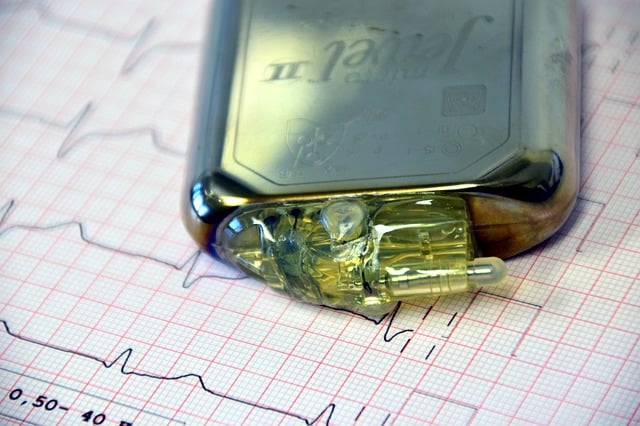3 Ways to Prep for Your High-Reliability Class 3 Electronics Project
You’re an original equipment manufacturer (OEM) in need of an electronics contract manufacturer (ECM) to supply circuit boards for a product you...
4 min read
 Matric Group
:
Nov 26, 2025
Matric Group
:
Nov 26, 2025

In electronics manufacturing, printed circuit boards are categorized based on the IPC Class Definitions: Class 1, Class 2, and Class 3.
Developed and managed by IPC, this system outlines quality standards and acceptability levels for each class, with classification ranging from general-purpose boards to those built for high-reliability applications.
The distinction between classes comes down to the level of scrutiny the assemblies undergo and the quality expectations they must meet.
For OEMs, understanding these classifications can help determine which standard aligns with their product needs and budget considerations:
| IPC Class 1 | IPC Class 2 | IPC Class 3 | |
| Category | General electronics | Dedicated service electronics | High-reliability electronics |
| Life cycle | Short | Long | Extended |
| Quality | Cheap | Good | Failproof |
| Examples | Toys, flashlights, smartphones | Laptops, Microwaves, and some mining equipment | Aerospace, military, & medical applications |
The first electronic products class is referred to as the “general electronics” category. This consists of boards with the lowest quality requirements and is mostly found in products with an expected short life cycle.
Think of a superhero toy you’d buy your nephew at Target. It lights up and echoes the hero’s signature catchphrase with the push of a button. The toy works great for your nephew for weeks after you give it to him, but would you be surprised if the light or one of the buttons stops working after a year or two? Probably not.
This is basically the “get what you pay for” class. These electronics are held to the lowest standard of quality and thus are usually found in cheap, high-volume productions.
Some electronics manufacturers don’t even bother with the class one category. Matric and Dynamic, for example, do not make electronics in class one. All boards manufactured through our facilities are either Class 2 or Class 3, due to the nature of the markets we serve and our dedication to product quality.
Class 2 electronic devices encompass all electronics where continued performance and a longer life cycle are required -- to a point. Uninterrupted service is desired, but not critical. Along with what's in the chart above, IPC Class 2 examples include:
In other words, these are items where an early life cycle failure would have you red-faced and slamming your fist, but wouldn’t put your life at risk.
Something to keep in mind: You’ll want to know which class to pursue before board design, as products must be specially designed for Class 2 and Class 3 specifications. A board designed for IPC Class 2 specifications can potentially achieve many of the same build requirements for Class 3, but rarely all of them.
The third class of circuit boards is subject to strict guidelines due to their importance in the field.
While Class 1 electronics are usually cheap and easily replaceable items and Class 2 electronics are more important and require an extended life cycle, Class 3 electronics are mission-critical items. Whether it’s a pacemaker or a military radar, a product that needs to meet IPC Class 3 requirements must use high-reliability electronic components to ensure uninterrupted service.
These electronics are usually the highest quality, and many OEM products that could pass as Class 2 opt for the IPC Class 3 standard because the benefits of higher-quality electronics outweigh the cost of additional testing and inspection.
Frequently Asked Questions about IPC Class Definitions
Q: What specific testing and inspection procedures are required for each IPC class?A: The specific testing and inspection procedures required for IPC Class 1, 2, and 3 electronics vary. Below we outline some of the key procedures:
Q: What are the implications of using a lower-class PCB in a higher-class application, or vice versa?A: Using a lower-class PCB in a higher-class application can result in serious risks, including insufficient power delivery, failure to meet operational requirements, or regulatory non-compliance. For instance, contamination or subpar soldering quality could lead to premature failures in critical environments, such as medical devices or aerospace equipment, where reliability is paramount. Conversely, using a higher-class PCB in a lower-class application can increase costs unnecessarily, as the additional testing and higher-quality components may exceed the requirements for general-purpose products. |
||||||||||||||||||||||||||||
Remember, the IPC PCB classes reflect the level of quality of each printed circuit board type, so in some cases, it's crucial to make sure your manufacturer is qualified to work with you.
Some electronic contract manufacturers only handle Class 1 electronics, so make sure you ask upfront. A contract manufacturer that specializes in Class 2 and/or Class 3 electronics may also be able to talk you through factors like customer requirements and cost.
When planning upcoming projects with Contact Matrix Group, it’s important to ensure alignment on the latest electronics compliance standards, including RoHS, IPC class definitions, and other industry benchmarks. Explore our free guide to electronics manufacturing standards to stay informed and support smoother collaboration on future builds.
(Editor's note: This article was originally published in August 2018 and was recently updated to reflect current industry trends.)

You’re an original equipment manufacturer (OEM) in need of an electronics contract manufacturer (ECM) to supply circuit boards for a product you...

When introducing a new electronic product design, many OEMs don’t fully understand the differences between IPC classifications -- or understand them...

If you needed a pacemaker to keep your heart beating as it should, would you settle for the level of electronics quality you’d find in a cheap toy...